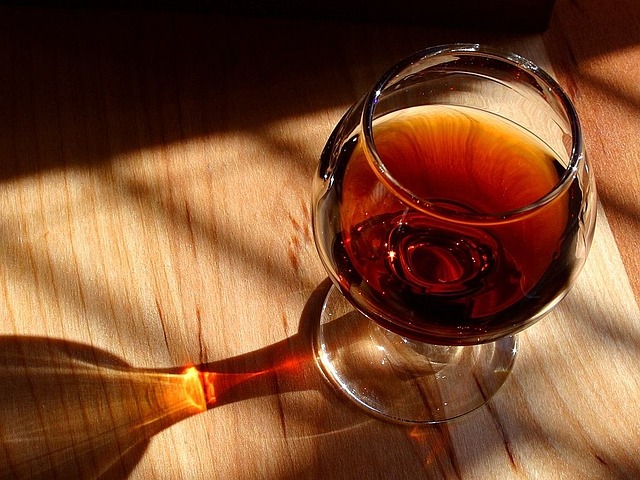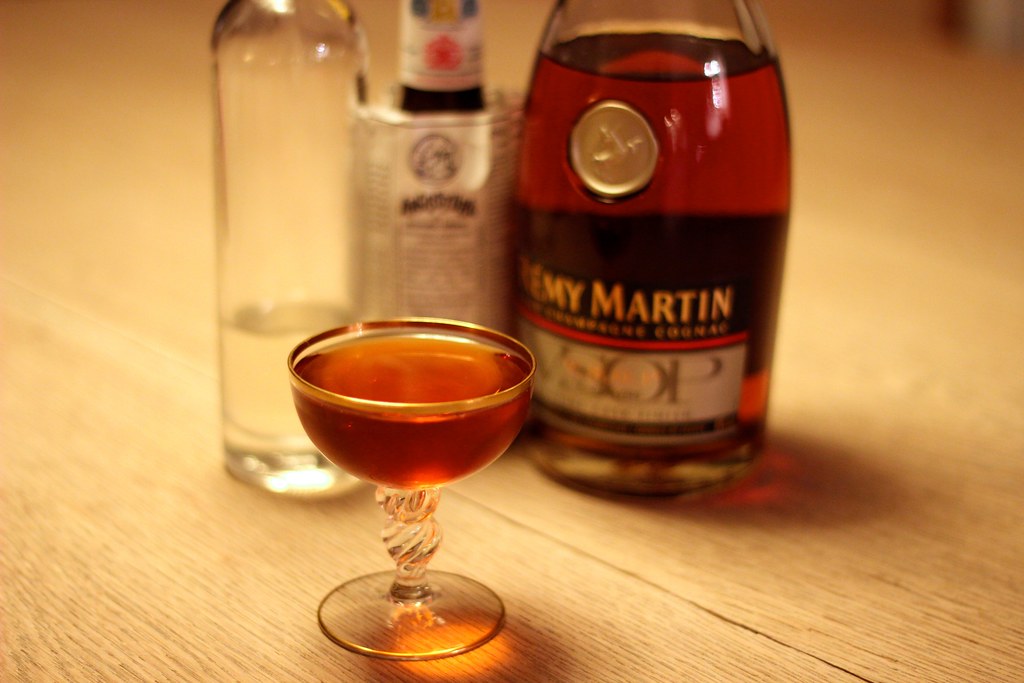
Brandy is a popular spirit that is enjoyed by many people around the world. It is a type of liquor that is made from distilled wine or fermented fruits, and it has a unique taste that is unlike any other type of alcohol.
Table of Contents
The Essence of Brandy
Defining Brandy
Brandy is a type of spirit that is produced by distilling wine and other fermented fruit juices. The distillation process removes the water and leaves behind the concentrated alcohol, which is then aged in oak barrels. The aging process gives brandy its distinct flavor and color.
Brandy is produced from various fermented fruits or distilled wine. However, the finished product itself is not considered wine. Certain types of wine, particularly fortified wines like sherry, vermouth, and madeira, typically have brandy added to them. A fortified wine is any wine that has a fruit-based (typically grape) spirit added to it.
Primary Flavors
Brandy has a complex flavor profile that is influenced by several factors, including the type of fruit used, the aging process, and the location where it was produced.
The primary flavors of brandy can be broken down into three categories: fruit, oak, and spice.
- Fruit: The fruit flavors in brandy can range from sweet and fruity to tart and acidic. The most common fruit used to make brandy is grapes, which produce a fruity and floral flavor. Other fruits like apples, pears, and apricots can also be used to make brandy, each contributing their own unique flavor profile.
- Oak: The oak barrels used to age brandy impart flavors of vanilla, caramel, and toasted nuts. The longer the brandy is aged in oak barrels, the more pronounced these flavors become.
- Spice: The spice flavors in brandy can vary depending on the production process and the location where it was produced. Some common spice flavors include cinnamon, nutmeg, and clove.
 photo credit: live.staticflickr.com
photo credit: live.staticflickr.com
Types of Brandy
The most common types of brandy are Cognac, Armagnac, American Brandy, and Fruit Brandies.
Cognac
Cognac is a type of brandy that is made in the Cognac region of France. It is made from white wine grapes and is distilled twice.
Cognac is aged in oak barrels for at least two years and is known for its smooth and rich flavor. The longer it is aged, the more complex and refined the taste becomes. They are classified according to age, with the youngest being VS (Very Special) and the oldest being XO (Extra Old).
Armagnac
Armagnac is another type of brandy that is made in the Armagnac region of France. It is made from a variety of grapes and is distilled only once. Armagnac is aged in oak barrels for at least two years and is known for its robust and rustic flavor. The longer it is aged, the more complex and nuanced the taste becomes. They are also classified according to age, with the youngest being VS and the oldest being Hors d’Age.
American Brandy
American Brandy is made in the United States and is typically made from a blend of grapes. It is distilled twice and aged in oak barrels for at least two years. American Brandy is known for its sweet and fruity flavor, with notes of vanilla and caramel. It is often used in cocktails or as a dessert drink.
Fruit Brandies
Fruit Brandies are made by distilling fermented fruit juice. They can be made from a variety of fruits, including apples, pears, cherries, and plums. Fruit Brandies are typically clear and have a fruity and floral aroma. They are often enjoyed as an after-dinner drink and are used in cooking and baking.
Factors Influencing Taste
Many factors influence the taste of brandy, including the aging process, distillation techniques, grape varieties, and terroir.
Aging Process
The aging process is one of the most important factors influencing the taste of brandy. The longer the brandy is aged, the more complex its flavor becomes. During the aging process, the brandy is stored in oak barrels, which impart flavors of vanilla, caramel, and spice. The type of oak used for the barrels can also affect the flavor of the brandy.
Distillation Techniques
The distillation technique used to produce the brandy can also affect its taste. For example, brandy produced using the pot still method tends to have a richer, more complex flavor than brandy produced using the column still method. The pot still method is more labor-intensive and expensive, but it produces a higher quality brandy.
Grape Varieties
The type of grape used to produce the brandy can also affect its taste. Different grape varieties have different flavor profiles, which can influence the taste of the brandy. For example, brandy produced using Muscat grapes tends to have a floral, fruity flavor, while brandy produced using Cabernet Sauvignon grapes tends to have a more robust, tannic flavor.
Terroir
The terroir, or the environmental factors that influence the growth of the grapes, can also affect the taste of the brandy.
Factors such as soil type, climate, and altitude can all influence the flavor of the grapes and, in turn, the flavor of the brandy. For example, brandy produced using grapes grown in a cooler climate tends to have a more acidic, tart flavor, while brandy produced using grapes grown in a warmer climate tends to have a sweeter, fruitier flavor.
Sensory Experience
Tasting brandy is a sensory journey that involves exploring the spirit’s aroma, taste, and texture.
Aroma Profile
The aroma of brandy is distinctively strong and complex. It offers a range of fragrances that include fruity, floral, spicy, and woody notes.
The aroma of brandy is influenced by the type of fruit used to make it, the distillation process, and the aging process. For example, brandy made from grapes has a fruity aroma, while brandy made from apples has an apple-like aroma.
Taste Profile
The taste of brandy is strong, unique, and complex. It offers a range of flavors that include fruity, nutty, caramel, vanilla, and spicy notes.
Texture and Mouthfeel
The texture and mouthfeel of brandy are also distinctively unique. It offers a smooth, silky, and warming sensation that lingers in the mouth. Brandy with a higher alcohol content tends to have a stronger and more warming sensation than brandy with a lower alcohol content.
Tasting Brandy
When it comes to tasting brandy, there are a few key factors to consider. These include the serving temperature, glassware, and tasting technique.
Serving Temperature
Brandy is typically served at room temperature, but depending on the type of brandy, it can also be served slightly chilled or warmed. For example, Cognac is often served at room temperature or slightly warmed, while fruit brandies are typically served chilled.
Frequently Asked Questions
What are the main flavor profiles of brandy?
Brandy has a complex flavor profile that includes fruity, floral, spicy, and woody notes.
The fruit flavors can range from plum, apricot, and peach to cherry and raisin. The floral notes can be reminiscent of rose, lavender, and violet. The spicy flavors can include cinnamon, nutmeg, and clove. The woody notes come from the oak barrels used for aging and can impart vanilla, caramel, and smoky flavors.
The combination of these flavors creates a unique and sophisticated taste that is enjoyed by many.
How does the taste of brandy differ from cognac?
Cognac is a type of brandy that is made in a specific region of France and is subject to strict regulations. The taste of cognac is generally more refined and elegant than other types of brandy.
Cognac is aged in French oak barrels, which gives it a subtle oak flavor and a smooth finish. The fruit flavors in cognac are often more subtle and nuanced than in other types of brandy.
Additionally, cognac is often more expensive than other types of brandy due to its high quality and limited production.
What distinguishes the taste of brandy from whiskey?
Brandy and whiskey are both spirits that are made from fermented grains or fruit, but they have distinct flavor profiles.
Brandy is generally sweeter than whiskey and has a more complex flavor profile due to the use of fruit in the fermentation process.
Whiskey, on the other hand, has a more straightforward flavor profile that is dominated by the grain used in the mash.
Additionally, whiskey is often aged in charred oak barrels, which gives it a smoky flavor that is not present in brandy.
What ingredients contribute to the flavor of brandy?
The flavor of brandy is influenced by several factors, including the type of fruit used, the alcohol content, and the aging process.
The fruit used in brandy production can have a significant impact on the flavor profile. For example, brandy made from grapes will have a different flavor than brandy made from apples or pears.
The alcohol content of brandy also contributes to its flavor, with higher alcohol content resulting in a stronger, more intense flavor.
Finally, the aging process in oak barrels imparts flavors of vanilla, caramel, and smokiness, which contribute to the overall flavor profile of the brandy.
Can you describe the sweetness level in brandy?
Brandy is generally considered to be a sweet spirit, although the level of sweetness can vary depending on the type of brandy and the aging process.
Some brandies are aged for a shorter period of time and have a lighter, fruitier flavor that is less sweet.
Other brandies are aged for a longer period of time and have a more intense, complex flavor that is sweeter.
The sweetness level in brandy is often balanced by the other flavors, such as the woody and spicy notes, to create a well-rounded and enjoyable taste.
Conclusion
Brandy is a unique and complex liquor that offers a range of flavors and aromas. Whether enjoyed straight, in a cocktail, or added to fortified wines, brandy is a versatile drink that can be enjoyed on many occasions.
Related Posts
Looking to expand your knowledge on whiskey and other spirits? Check out these related posts:
- What is Moonshine Whiskey: A Guide to the Illicit Spirit: This post delves into the history and production of moonshine whiskey, a term that has been around for centuries.
- What U.S. State Name is on Jim Beam Whiskey Labels?: Jim Beam is a well-known brand of bourbon whiskey, and this post explores the unique labeling of their bottles.
- Whiskey Freezing Point: What You Need to Know: Have you ever wondered if whiskey can freeze? This post answers that question and provides additional information on the science behind the freezing point of whiskey.
- What Does Bottom Shelf Whiskey Mean? Explained.: This post explains what makes bottom shelf whiskey different and how to choose a quality whiskey without breaking the bank.
- How to Make Whiskey Taste Better: Expert Tips and Tricks: From adding water to choosing the right glassware, these tips will help you fully enjoy your whiskey.



